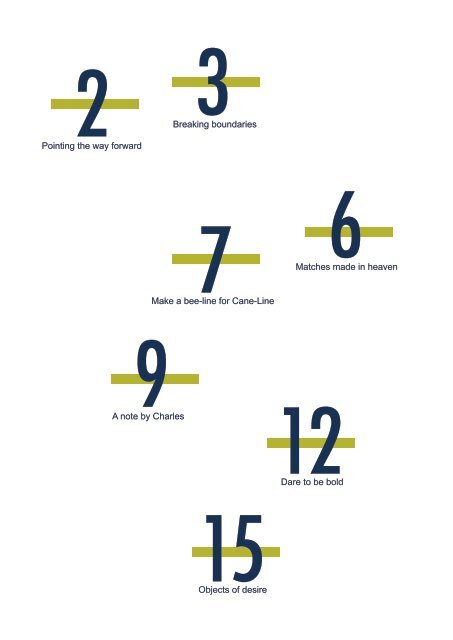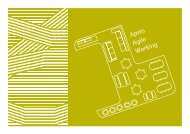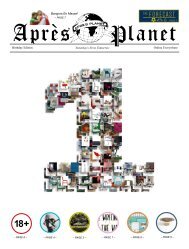You also want an ePaper? Increase the reach of your titles
YUMPU automatically turns print PDFs into web optimized ePapers that Google loves.
2<br />
Breaking<br />
Pointing the way forward<br />
3boundaries<br />
Pointing the way<br />
forward<br />
6<br />
7<br />
Matches made in heaven<br />
Make a bee-line for Cane-Line<br />
9<br />
12<br />
A note by Charles<br />
Dare to be bold<br />
15<br />
Objects of desire<br />
Anyone looking for a clear and<br />
unequivocal answer to the question<br />
“what approach will design take in <strong>2018</strong>?”<br />
within the context of the great Salone<br />
Internazionale del Mobile di Milano or the<br />
Clerkenwell Design Week would have been<br />
surprised.<br />
There was no one single approach, but<br />
many different, if not radically different,<br />
design approaches. In fact, one could<br />
attempt a play on words, to the effect that<br />
the lack of a well-defined trend should be<br />
seen as the driving trend.<br />
Unless we missed a major part of the<br />
exhibitions where trendsetters all work<br />
around the same theme (as what<br />
happened with height-adjustable desks at<br />
Orgatec a few years back), it is fair to say<br />
that this is an observation that has been<br />
made more and more over the last couple<br />
of years – despite numerous attempts to pin<br />
new “-ism” labels on things, this has simply<br />
not happened.<br />
There have been many and varied styleapproaches<br />
in <strong>2018</strong>, from organicism to a<br />
return to the classic, a search for purity or<br />
fantasy and, within each different strand,<br />
there are designers from the most diverse<br />
cultural and geographical contexts. This<br />
sends a clear message that creatives<br />
all over the world are guided by their<br />
“reference tribes”, moving endlessly around<br />
a global market in which localisms appear,<br />
from a creative point of view at least, to be<br />
on the wane. The definitions that attempted<br />
to identify “national styles”, postulating<br />
Italian rather than Scandinavian or German<br />
design, now appear meaningless.<br />
Despite this seemingly “directionlessness”,<br />
one has to admit that the possibilities<br />
that design free from a specific school of<br />
thought is something to look forward to...<br />
2








